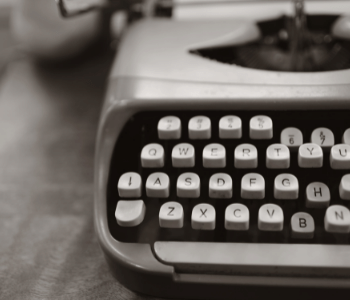How to ACTUALLY Avoid Plagiarism

If you’re a student, budding journalist or just someone taking up writing, you definitely do not want to become known as a plagiarist.
In schools, plagiarism carries with it severe penalties, including potential expulsion. Outside the classroom, being marked as a plagiarist, especially in a public way, is a permanent stain on one’s career. Though some careers move past it, the cloud is always there.
However, if you search for how to avoid plagiarism, you’ll likely receive a ton of bad advice. Whether it’s people trying to sell you essay mill services, “automatic paraphrasing” tools that scrambles your text or simply a plagiarism detection tool that claims it can spot any problems before you submit the work.
Simply put, avoiding plagiarism, actually avoiding plagiarism, isn’t about adding a new tool to your arsenal, it’s about changing the way you write. If you write with care and are proactive in your approach to dealing with outside content, you don’t need a plagiarism checker or a paraphrasing tool.
Best of all, this approach produces much higher-quality writing and can help you better understand the material that you’re writing about. Once you put the effort into mastering it, it can also easier, faster and more effective than using most of the solutions.
The only thing it requires is a change in your writing habits.
The Most Common Plagiarism Mistakes
One of the mistakes many new writers make is thinking that the issue of plagiarism is one of copying. However, that’s not true. The issue is attribution. Properly citing where you get your facts, ideas and words from is the best guarantee that your work is plagiarism-free.
But this is where many writers make their mistake. They typically do either or both of these things:
- Copy Text Into a Work to “Edit”: This stems from a misunderstanding of paraphrasing. Paraphrasing is not taking someone else’s words and changing it “enough” to make them yours. It’s about starting with a blank page and writing the information in your words. If you bring someone else’s words into your writing, you need to clearly cite it as a quote.
- Adding Attribution After the Fact: Many authors, when they are in the act of writing, avoid adding attribution to their work as they are going. Instead, they attempt to add it in the editing process, when they are editing for grammar, spelling and other errors. This, however, leads to mistakes. Attribution inevitably is missed, often leading to allegations of plagiarism.
With that in mind, the secret to avoiding plagiarism is fairly simple: Don’t write in a way that makes it possible to accidentally plagiarize. When you try to edit someone else’s words, you always run the risk of not editing it enough. When you attempt to add attribution after your rough draft, you run the risk of forgetting something.
While none of this will help you if you are deliberately trying to plagiarize and hoping not to get caught (very little will), it can help you if your desire is to do the best non-plagiarized work that you can.
The Cleanroom Technique
The simplest way to apply this approach is through the cleanroom writing technique. Though the approach is laid out in much more detail here, the fundamentals of it are very simple.
- Never Mix Original and Unoriginal Content: Whatever document you are writing in should never have any text or notes other than your writing.
- Cite Information As You Go: Don’t wait to include attribution. Cite your work as you write, not as part of the editing process later. Whether you are including links or full MLA/APA citations, doing it as you write prevents later mistakes.
- When You Have to Paste, Cite Immediately: Though you should limit the content you do paste in, when it is appropriate and necessary to bring someone else’s work into your project, quote it and cite it immediately. Do not wait to add the quotation marks later.
- When Reformatting, Be Mindful of Your Citations: If you need to reformat or alter the work down the road, take a moment to ensure that your citations remain intact.
The goal here is to create a gap between your work and whatever research you are doing for it. Simply put, the two should never touch. This can be as simple as using two separate files, one for your notes and one for your writing, or it can be as involved as using separate computers or keeping only physical notes.
Either way, the main point is to keep outside work away from your writing and to make citation part of the writing process, not the editing process.
If you do those two things, you can be reasonably confident that your work is free of plagiarism and without the aid of any dubious technical trickery.
Bottom Line
While the worry about plagiarism is understandable, the solution to that worry is better writing habits, not new technology.
However, this simple truth belies an uglier one: There are no shortcuts in writing.
If you want writing that is original, high-quality and well-researched, there is no substitute for simply putting in the work.
But that is where the problem often rises. Many want shortcuts and that’s why these other solutions are so tempting. Using an online paraphrasing tool or other tips and tricks, may not help you actually avoid plagiarism, but it’s easier than changing your writing style to prevent the issue altogether, at least in the short-run.
The only tool that can help is the use of a plagiarism detection tool. However, if that tool finds something that you missed, you need to examine your writing process rather than being glad you avoided the issue.
Technology, eventually, will fail you. No matter what approach you take. Instead, you need a process that prevents it completely, rather than hoping your shortcuts are enough.
Want to Reuse or Republish this Content?
If you want to feature this article in your site, classroom or elsewhere, just let us know! We usually grant permission within 24 hours.
